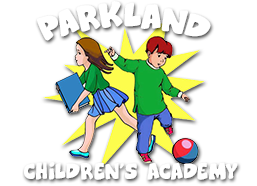
The age of four to five years old is such an exciting time in your child’s life. This is when they start mastering the art of running, hopping, kicking a ball, throwing, swinging, and climbing and also start showing signs of becoming independent, self-confident and creative.
At this age, their attention span increases and they are very eager to try new things. Their vocabulary grows, they love singing and rhyming, and they start learning to express their emotions.
This is the age where your child, who is rapidly developing and easily influenced, will be attending pre-kindergarten (pre-k), so it is vital that you, the parent, look for a high-quality pre-k program with good teachers.
What To Look For In A Pre-Kindergarten
When you research the pre-kindergarten that you are wanting your child to attend, it is important to look at all aspects of the school and program. Those aspects must include:
- The teachers at the school
- The quality of the program taught
- The classroom layout
- The playground
What Qualities Must A Pre-K Teacher Have?
You cannot underestimate the lasting impact that teachers have on a child’s life.
A good teacher with a passion for her job can help a child flourish and grow. A bad teacher can have the opposite effect. What qualities should you as a parent, look for in a pre-k teacher?
- Education, experience, and dedication to the job
- Enthusiasm
- Flexibility – children are not always predictable
- Passionate about their job and helping children develop
- Good communication skills with both children and their parents
- A warm personality that is both kind and respectful
- They must have knowledge in First Aid and be equipped to deal with any medical emergency the child may have
If you observe the teacher and child interaction, you should observe the following:
- The teacher crouches or kneels next to the child, engaging them at their level
- They make eye contact and are approachable and supportive
- They talk to the children and love watching them develop their language skills
- They help the child to settle disagreements with their peers in a productive, constructive manner.
- They listen to the children and validate their feelings and opinion
- They provide a clear routine in a safe environment but are flexible where necessary
- They help the children with simple tasks like tying their shoes or fastening their buttons while encouraging them to learn how to do so
- The children spontaneously run up to them and excitedly share their news
Signs Of A Good Quality Pre-K Program
There are a few signs that separate a good quality pre-k teaching program from just childminding.
- The teaching must be purposeful and have learning goals.
- The children must be supervised but also self-directed. If they are instructed for example to draw a dog, they must be allowed to choose the color they want the dog to be, and draw the type dog they want, all pictures do not need to look exactly the same.
- There are strict laws regarding teacher/adult vs children ratio, this being smaller for the younger age groups. This needs to be strictly adhered to.
- The program must include rest and playtime, playtime preferably outdoors when possible.
- The teacher must be trained to assess and keep track of the children’s social and emotional growth and academic preparedness. They must be able to pick up on developmental delays, learning disabilities and health problems and guide the parents to access the help the child needs. Attention to child performance within the program is a vital part of the teacher’s job.
The Classroom Layout
Just like the program is specifically designed to encourage children to grow and develop, the layout of the classroom is also purposefully planned.
- The class should ideally have an open floor plan, with low shelves, tables, and chairs
- According to State Law, the bathroom and toilet should provide privacy (a low wall) but the teacher must at all times be able to see into it.
- Toys and blocks should be easily accessible for free play.
- A box with dress-up clothes helps children develop language skills, problem-solving and empathy, all through make-believe.
- Safety cannot be compromised so careful planning goes into:
- Keeping plug sockets covered.
- Sharp corners on furniture are rounded.
- All toys are child-friendly, clean and in good condition.
- All supplies like paint and cleaning supplies are stored safely, not within a child’s reach.
- The classroom is cleaned regularly.
The Playground
The outside is where children play freely, also needs to be planned and carefully maintained:
- The grounds must be secure. Children should not be able to venture out, and unauthorized people must have no access.
- All toys and equipment must be safe, regularly inspected and maintained.
- The area must be clean and free of any poisonous trees or plants.
- The teachers must be able to see the whole area at all times.
If you want your child to develop socially and emotionally, and acquire an early love for learning with a curriculum-based program in a family orientated environment, contact Parkland’s Children Academy at 954-688-5877, today!
